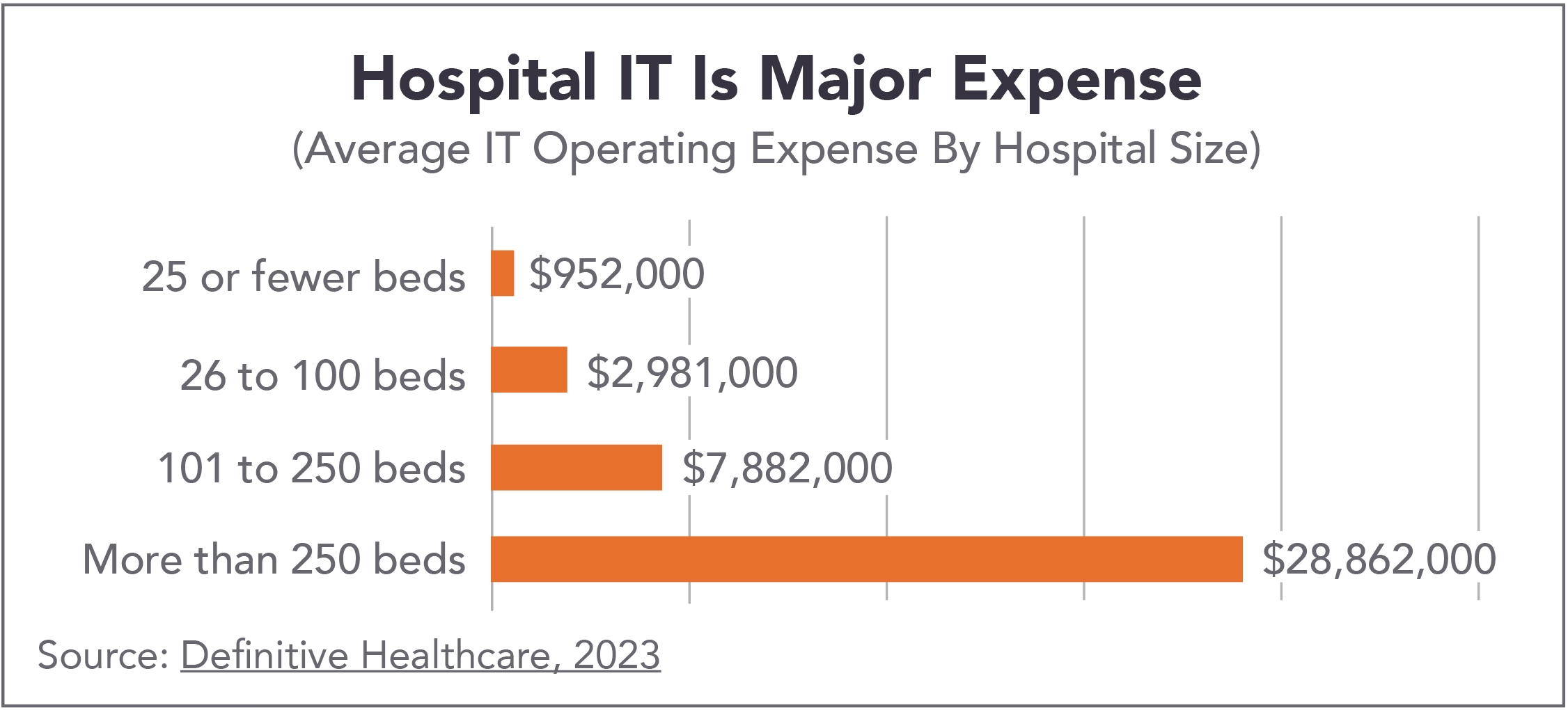Many hospital IT areas have become costly and inefficient. Hospital leaders, in an effort to strengthen their balance sheets, are taking notice and targeting IT areas for cost cutting and operational improvement.
Facing the Problem
High IT costs are on the radar for hospital CIOs and CEOs:
- About half of CIOs believe that there are more applications in their portfolio than the business requires.
- Many hospital CEOs are aware of a Gartner study that estimates they could cut software spending by a third, simply by optimizing software configurations, recycling software licenses, and using a software asset management tool.
- Hospital leaders are keenly aware that IT expenses are large, ranging from 3% to 6% (or more) of overall budget, which makes them a target for cost control.

How Did This Bloat Happen?
When it comes to IT, hospitals had the best intentions. Hospital leaders thought that IT solutions would be worth the investment by saving them money downstream. After all, hospitals needed technology in so many areas: electronic health records, medical databases, medical imaging, medical diagnosis, electronic billing, e-prescriptions, insurance processing, clinical decision support, financial management, artificial intelligence, and many others. Unfortunately, the solution became part of the problem. Hospitals became bombarded with IT apps. There are 350,000 of them to choose from!
Then, with technology constantly changing, IT programs became redundant or inefficient.
With IT, Hospital Administrators Face a Double Bind
At the same time that hospitals are trying to trim IT costs, administrators also know that staying current with IT is vital to their effectiveness. They feel the double bind of wanting to control costs while needing to invest in updated systems.
According to Fierce Healthcare, “Over the next year, more than 95% of health care providers expect to make new software investments, with one-third planning significant new investments. Roughly 35% of providers plan to spend more than usual over the next 12 months as they seek productivity and efficiency improvements to address rising margin pressure and labor tightening.”
Two Possible Solutions: Practically Starting Over and/or Outsourcing
With overall operating losses mounting, hospital executives are making their IT programs one of their targets. They’re looking at two solutions to rein in costs without degrading their capabilities.
- A thorough review of all IT programs. With all the recent advances in technology, legacy hospital systems easily can be outdated. One study estimates that a review and updating can save the average hospital $2 million immediately!
- Outsourcing IT. In both hospital and non-hospital business, it is common to outsource IT, in whole or in part. Across all businesses, 37% of IT already is outsourced, with a trend to double hospital IT outsourcing from today’s levels by 2027.
The benefits of outsourcing IT include access to best-in-class applications, transitioning fixed staffing costs to variable costs, and leveraging third-party objectivity to conduct a rationalization process to eliminate redundant systems.
The Hospital IT Status Quo Is No Longer Acceptable
Both for-profit and non-profit hospitals across the U.S. are facing strong financial headwinds. Several recent American Hospital Association studies note that hospital expenses increased by 17.5% between 2019 and 2022, contributing to the situation where now 40% are losing money.
For some hospitals, these financial pressures are putting care at risk. Changes in the IT area could significantly cut costs and, at the same time, improve care delivery.

